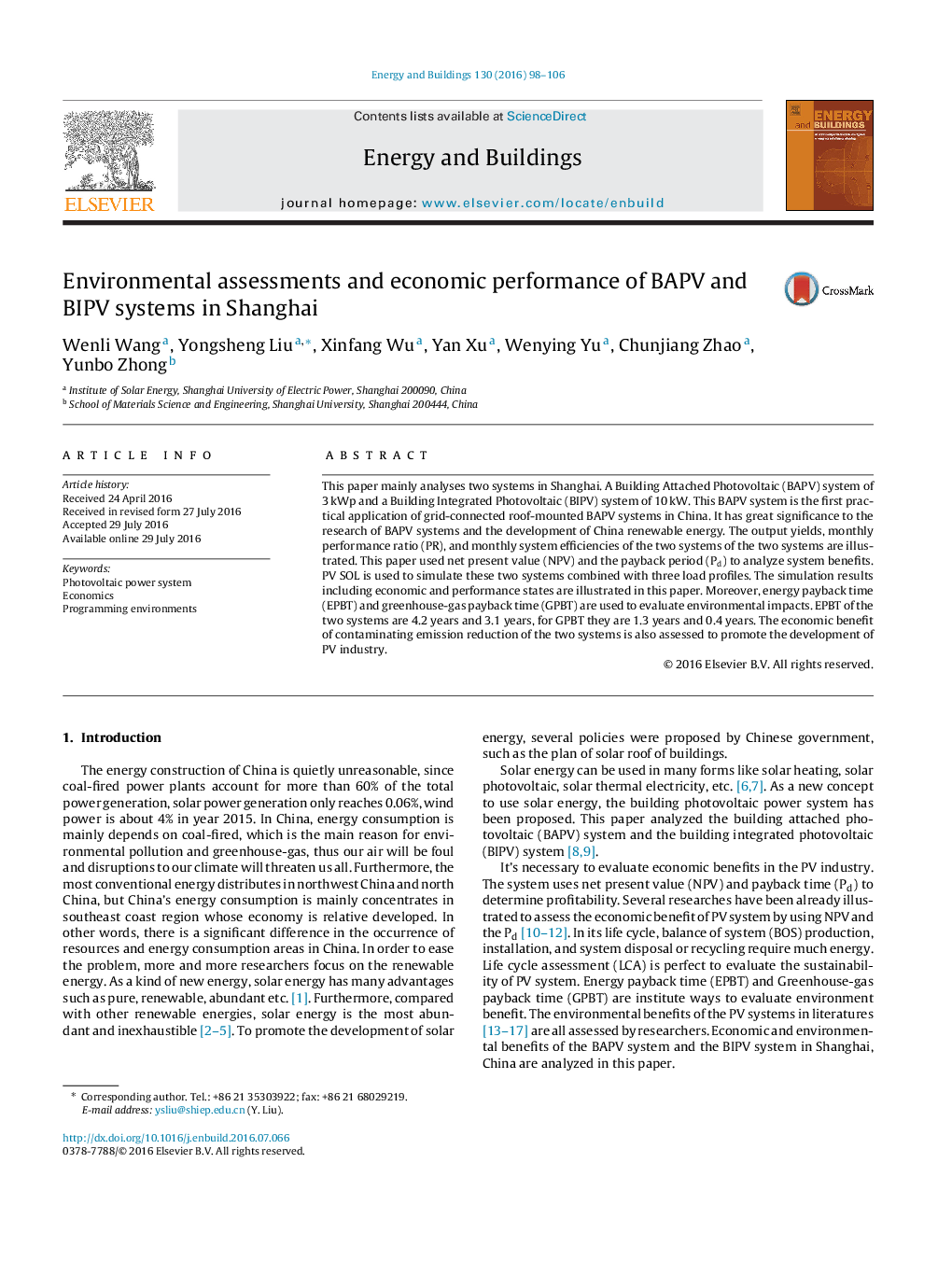| Article ID | Journal | Published Year | Pages | File Type |
|---|---|---|---|---|
| 4919578 | Energy and Buildings | 2016 | 9 Pages |
Abstract
This paper mainly analyses two systems in Shanghai. A Building Attached Photovoltaic (BAPV) system of 3Â kWp and a Building Integrated Photovoltaic (BIPV) system of 10Â kW. This BAPV system is the first practical application of grid-connected roof-mounted BAPV systems in China. It has great significance to the research of BAPV systems and the development of China renewable energy. The output yields, monthly performance ratio (PR), and monthly system efficiencies of the two systems of the two systems are illustrated. This paper used net present value (NPV) and the payback period (Pd) to analyze system benefits. PV SOL is used to simulate these two systems combined with three load profiles. The simulation results including economic and performance states are illustrated in this paper. Moreover, energy payback time (EPBT) and greenhouse-gas payback time (GPBT) are used to evaluate environmental impacts. EPBT of the two systems are 4.2 years and 3.1 years, for GPBT they are 1.3 years and 0.4 years. The economic benefit of contaminating emission reduction of the two systems is also assessed to promote the development of PV industry.
Related Topics
Physical Sciences and Engineering
Energy
Renewable Energy, Sustainability and the Environment
Authors
Wenli Wang, Yongsheng Liu, Xinfang Wu, Yan Xu, Wenying Yu, Chunjiang Zhao, Yunbo Zhong,
